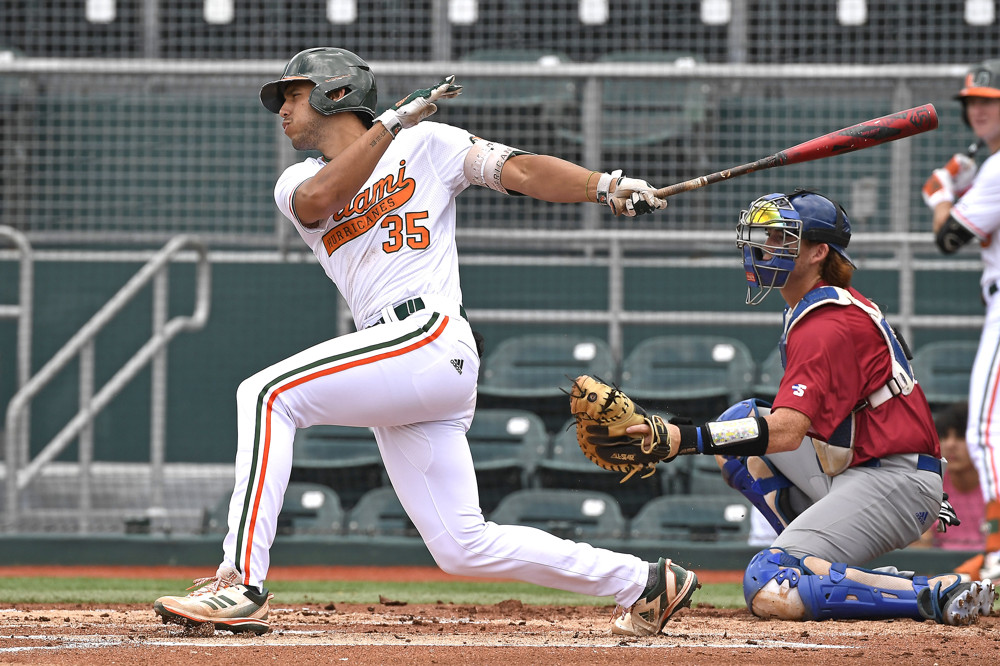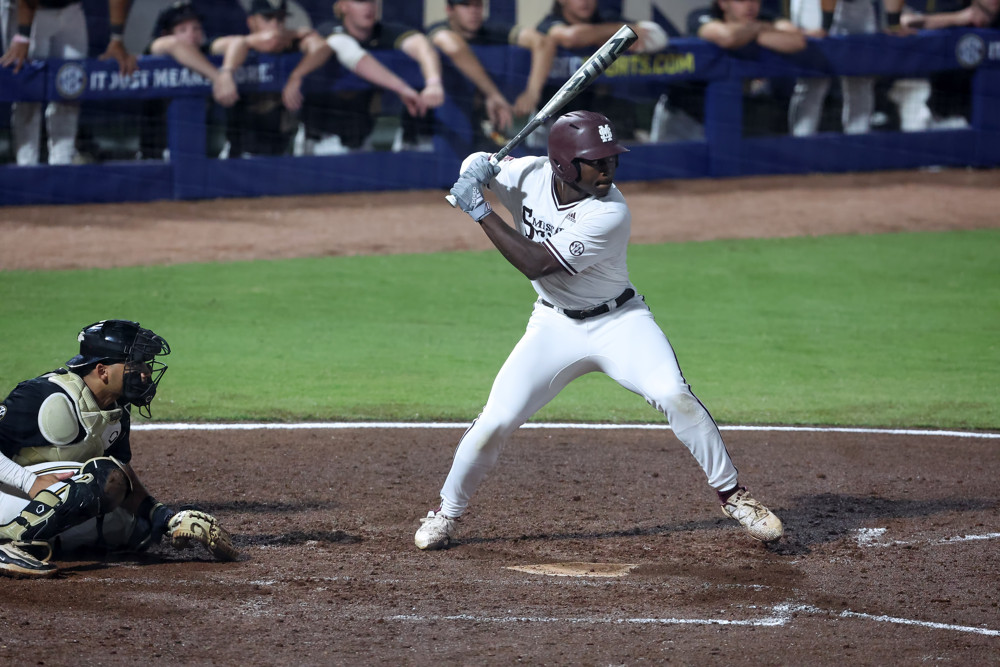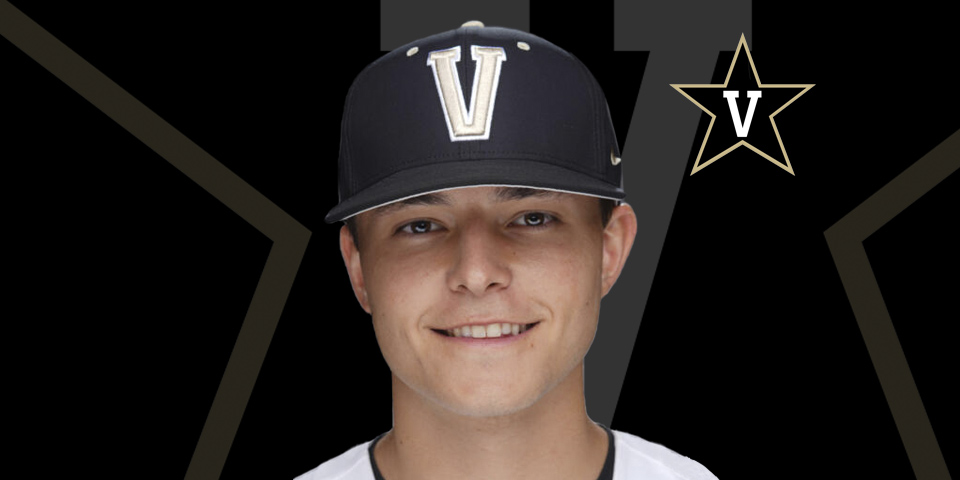| School | University of Florida | |
| Bio | R/R 6-2, 225 lbs. | |
| Date of Birth | 03/01/2002 | |
| Fastball | 55 | |
| Slider | 60 | |
| Curveball | 60 | |
| Splitter | 70 | |
| Control | 45 | |
| Future Value | 55 |
>> All grades on 20-80 scouting scale
Written by Brandon Tew
Draft Expectation: 1st Round
Analysis:
Hurston Waldrep possesses the best pure stuff of any pitcher in the 2023 MLB Draft including Paul Skenes.
Waldrep’s four-pitch mix is undeniably electric and the presence and confidence he exhibits has scouts and teams dreaming about if he can reach his extremely-high upside.
College Career:
Waldrep transferred from Southern Miss after his sophomore season when he compiled 90 innings over 17 starts, finishing with a 3.20 ERA and 140 strikeouts.
His junior season at Florida was up-and-down at times. He finished with a 4.16 ERA over 101 2/3 innings and 156 strikeouts, which was good for 3rd in Division I baseball.
One major knock on Waldrep this past season was his 12.7 BB%, as his 57 walks were the eighth most in Division I and led to some of his struggles.
Pitch Delivery:
Waldrep is a well-built, athletic mover on the mound. From the windup, he keeps it simple using tiny steps for rhythm and timing to put himself in the same position he is in the stretch.
Creating momentum as he drifts slightly forward with a big leg kick, he gathers himself at the top up to his letters before dropping deep into his back leg.
Right after peak leg lift, he turns his lead foot inwards towards second base to build tension as he rotates and uncoils his hip landing in a powerful position at stride foot contact.
His arm gets to an almost 90-degree angle with his arm in a good position at stride foot contact, and he does a good job of blocking his lead leg out. However, the delivery is up-tempo and his long arm swing can lead to inconsistency in the timing of the delivery.
The significant tilt in his shoulders produces a high over-the-top arm slot and he struggles with command and control at times, with a violent movement of his head off to the side and some closed-off recoil in his finish. The side-head lean causes him to miss high and arm side when he’s out of sync and late.
Waldrep’s athleticism allows him to succeed with these movements, but a team could opt to clean up his arm action with a shorter path. There’s a lot to like about his delivery but some concerns exist around repeatability and control.
Pitch Profiles
Fastball:
The fastball is a make-or-break pitch and the key to Waldrep’s success. Waldrep sits 95-96 mph most games but has touched 99 this season and the ball jumps off his hand.
At times, the pitch is inconsistent in shape and he can struggle with location but the cut-ride action of the pitch is compelling. Waldrep’s success will come if he’s able to throw the pitch glove side with regularity.
The cutting action of the pitch makes it very hard to square up on the bat especially up in the zone.
Waldrep, as a supinator, with low spin efficiency could opt for more of a true cutter in the same mold as Corbin Burnes.
The pitch is very successful up in the zone but also misses bats down and away from righties especially. Waldrep’s ability to cut the ball in on the hands of lefties could make the fastball a devastating pitch for opposite-handed hitters as well.
With his higher arm slot, Waldrep struggles with consistently getting the pitch to the top of the zone. He lives too much in the middle third of the zone vertically around the belt and thighs with his fastball.
Slider:
Waldrep’s slider is a gyro pitch with gaudy spin rates that generates depth at its absolute best in the upper 80s. Waldrep threw the pitch with less frequency early in the season, relying more on his curveball and splitter.
The slider though is a pitch that Waldrep can backfoot to left-handed hitters but also dart it away from righties.
With Waldrep’s propensity to supinate and spin the baseball, teams could help him develop a slider shape with more sweep or even a sweeper to pair with his gyro offering for right-handed hitters. He might have to lower his arm slot to accomplish this as well but the high arm slot makes Waldrep’s slider play well down in the zone.
This is huge because he has a true out pitch for lefties in his split and a curve that can also neutralize lefties.
There are a lot of options on the table but as with most of Waldrep’s pitches it comes down to the command of the pitch and getting it down in the zone. The slider could be a true weapon in MLB paired with his splitter as a tunneling option down in the zone.
Curveball:
The curve for Waldep is a banger with a downer shape and a tight spin in the low to mid-80s. Early in the season, he used the pitch a lot and especially ahead in counts.
The shape of the pitch is great but he threw the pitch too much. He needs to start to sprinkle in the pitch as a strike stealer early in counts instead of as a chase pitch. He can throw the pitch for a chase below the zone but possesses better offerings in terms of chase pitches.
These back-to-back at-bats highlight how good Waldrep’s curve can be but also what happens when he commands his fastball and curve allowing them to play off each other.
Splitter:
Waldrep’s splitter is demonic and dives into the depths of hell to get swings and misses with a 65% whiff rate on the pitch according to 6-4-3 charts. The pitch is one of the absolute best in the country.
The grip allows Waldrep to kill spin and both cut and fade the pitch. Watching him pitch on a good camera angle behind the mound is an absolute treat because the splitter’s movement is absurd when thrown well. This is Waldrep’s actual putaway pitch. Even when hitters know it’s coming, especially in two-strike counts, they still swing over the top of it.
Waldrep also can drop the pitch into the zone to keep hitters honest. The splitter will be a major factor in how successful he is as a pro. The pitch is a true double plus and can expose even the best of hitters.
Pitch Usage:
Pitch usage has been more of a detriment than anything this past season for Waldrep, though he seemed to figure some things out later in the season.
Dropping his curveball usage and upping his slider usage led to great success for Waldrep in his first three NCAA tournament starts.
Over 21 innings he struck out 37 batters, surrendering two runs while walking seven. This tweet explains Waldrep’s pitch usage and how he fixed some predictability during the season.
For his first 14 starts, Waldrep’s usage rates on his pitches were horrible. For a guy with command for 3 plus off-speed pitches, this cannot happen. FB nearly 50% of the time, SPL at 23%, CB at 20%, and SL at 9%.
He also threw 82% FB in 2-0, 2-1, and 3-0 counts 🤯 (.343 BAA).— Bouch (@alexbouchard07) June 25, 2023
Pitch usage can easily be fixed by Waldrep even though he struggled through 2 1/3 innings against LSU in the CWS finals. The tweaks in pitch usage before that are promising signs that Waldrep can be dominant with his explosive pitch arsenal.
Summary:
With 3 plus or double-plus secondary pitches, he also has a fastball that can be more plus if he fixes its inconsistency. In its current form, it still projects as an average to above-average big-league pitch.
Waldrep can be a truly dominant starter if he harnesses his pitches, as this will determine his MLB role and his astronomically high ceiling.
Projection:
An athletic righty with an electric pitch mix. His success as a starter will be determined by his control and the ability to throw consistent strikes.
MLB Comp: Logan Gilbert



